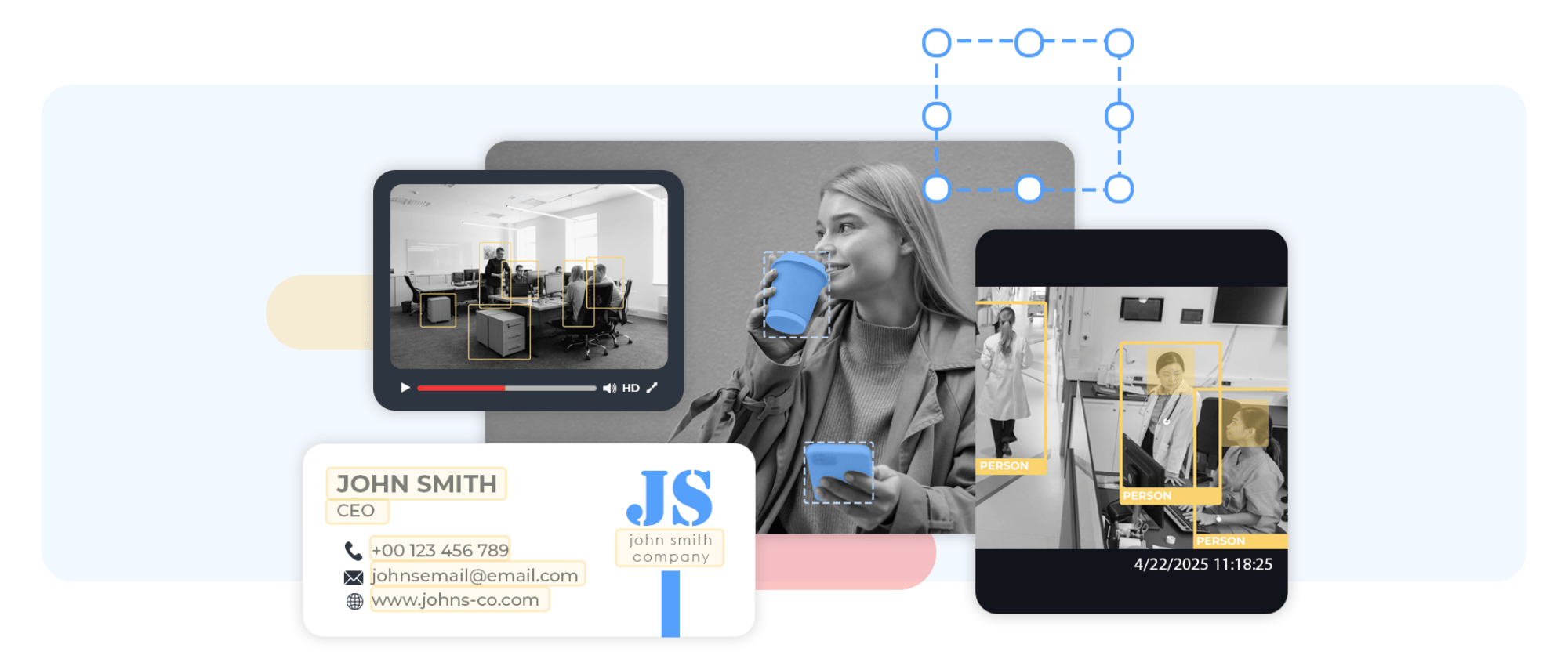Customer Journey Mapping (CJM) is a fundamental component of the Customer Experience Management (CXM) framework, vital for planning and optimising the buyer’s entire life cycle. While providing valuable insights into specific touchpoints with consumers, encompassing both traditional and virtual spaces, CJM serves as a starting point for implementing further activities related to boosting shopper experiences. This makes it an essential and invaluable guide for businesses seeking to efficiently foster market success through data- and insight-driven strategies.
Customer Journey Mapping is highly significant for CX-mature businesses as it offers stakeholders a comprehensive understanding of critical interaction points across the sales funnel. It provides insights into the entire buyer decision-making process, from initial contact to final purchase and beyond. It helps organisations stay updated on consumers’ changing needs and preferences, continuously determine their intentions and motivations, and identify valuable opportunities for planning adequate actions and creating more personalised and satisfying experiences.
Customer Journey Mapping can pay off when done well, furnishing tangible benefits for business efficiency and productivity. According to the Aberdeen Group report, “Companies looking to succeed in today’s marketplace must determine buyer sentiment and behaviour changes across different stages of the purchasing lifecycle. This is journey management that ultimately leads to happy customers and advocacy”.
The strength of CJM is also reflected in many statistics, such as:
Organisations that possess and utilise Customer Journey Maps are twice as likely to surpass their competitors in terms of performance.
(Source: Gartner)
Optimising the customer journey can increase satisfaction by 20%, boost revenue by up to 15%, and lower the cost-to-serve by 15-20%.
(Source: McKinsey)
Companies mapping customer journeys enjoy more than three times year-over-year growth in buyer referrals compared to those that don’t do that.
(Source: Aberdeen Group)
Customer Journey Mapping: key strategies and best practices
Managing and effectively enhancing buyer experiences through Customer Journey Mapping requires a systematic approach, solid basis, specific strategies, and relevant best practices. The suggested steps below help streamline and guide the undertaking from the beginning to the end.
Profoundly understanding buyers’ needs
Gaining a deep understanding of clients’ intentions, liking, incentives, shopping patterns, desires, perceptions and segmentation is vital in the first step. This can be achieved through comprehensive market research, gathering consumer feedback, and utilising this information alongside collected datasets to produce valuable insights. A holistic view of customers must be fueled with various aspects such as:
Demographic information
This refers to data and characteristics related to the demographic profile of customers, such as age, gender, location, income level, education, occupation, and others.
Transactional data
It covers past purchases, browsing history, and past interactions with the brand.
Behavioural data
The data encompasses buyer interactions across various touchpoints, such as website clicks, app usage, or social media engagement.
Customer support data
The information concerns historical support interactions, including inquiries, complaints, and resolutions.
Social media data
This covers conversations, comments, and different kinds of sentiments about the brand that appeared on social media.
Third-party data
You can find here external sources data, such as industry reports, market trends, and competitor analysis.
What is also important, Customer Journey Mapping cannot be treated as a one-time exercise. It should be an ongoing process requiring regular review and constant updates, ensuring alignment with the ever-changing market landscape.
Touchpoint assessing and mapping
Next, touchpoint assessing and mapping the customer journey is critical. This process should encompass various stages, from initial awareness to post-purchase, considering the emotions and needs of consumers while intensely focusing on the interactions they directly experience. Regarding the CX strategy efficiency, it is necessary to prioritise the most important and promising touchpoints, as they can significantly impact overall engagement and drive desirable outcomes. Making them faster, easier, and more enjoyable for consumers is essential, in addition to effectively addressing weak points determined to avoid them in the future.
Here’s what valuable insights companies can gain with Customer Journey Mapping:
- Better understanding of buyer needs, preferences, and expectations at each CX stage, considering different segments or personas.
- Precisely identifying crucial moments of truth related to touchpoints or interactions that significantly impact the customer’s perception of the experience.
- Efficiently determining the pain points, bottlenecks, and gaps in the entire journey where individuals may encounter difficulties or dissatisfaction.
Building remarkable Customer Journey Maps
Once an excellent CJM exercise is completed, ensuring that the insights and findings are not simply put on the shelf but effectively spread within the organisation is critical. Customer Journey Maps (CJMs) are instrumental in facilitating this process.
Acting as powerful tools for communication and alignment, Customer Journey Maps provide a visual and comprehensive representation of expected experiences previously indicated in the mapping process. They serve as a shared language and reference point for teams across departments, helping them make informed decisions to deliver a seamless and exceptional customer experience at every step.
By incorporating Customer Journey Maps into internal training, workshops, and presentations, companies can primarily:
- Ensure cross-functional knowledge sharing and efficiently communicate key insights, recommendations, and outcomes to relevant teams and departments while fostering a consumer-centric mindset.
- Create awareness and educate employees about the initiative, its purpose, and current results in an easy-to-understand way.
- Encourage collaboration and inspire teams to take actionable steps and collectively work towards enhancing the overall customer journey.
- Continuously monitor how the CJM initiative impacts Customer Experience quality while establishing metrics and KPIs for tracking.
As Gartner states, Customer Journey Maps only bring value when used to inform business priorities. Moreover, according to Jane-Anne Mennella, Senior Director Analyst at Gartner, “Delivering a consistent, competitive advantage depends on having a robust collection of inputs to inform maps, along with guidance on when and how to use them.”
CX enhancement and constant improvement
Lastly, by leveraging the powerful insights gained from the Customer Journey Mapping initiative, companies can effectively enhance their support and services, taking into account their goals, industry specificity, capabilities, and shopper expectations. This knowledge will empower them to elevate experiences at every buyer interaction while strategically prioritising channels with the highest potential for specific activities. To ensure long-term success, continuous feedback monitoring, key performance indicators tracking and areas for improvement identifications are also important. Such an ongoing commitment to refinement and adaptation can make the CJM project meaningful, worthy of investment, and integral to delivering exceptional CX.
Customer Journey Mapping: what are the benefits
Understanding and optimising the shopper’s journey has become paramount in today’s customer-oriented business landscape. Therefore, CJM offers invaluable opportunities to build actionable strategies, optimise buyer path and elevate the overall experience, all backed by data-driven decision-making rather than relying on gut feelings.
Among the numerous benefits that Customer Journey Mapping provides, some of the most significant ones include:
- The ability to continuously fine-tune CX processes and adjust for elevated customer experiences. This helps to create memorable moments that leave a lasting impression, fostering loyalty and advocacy, making CJM an indispensable tool in pursuing success.
- Aptitude to anticipate future needs and proactively address evolving buyer expectations thanks to a deep understanding of the overall journey. It allows businesses to stay ahead of changing trends, provide relevant solutions, and deliver exceptional experiences. One such benefit is hyper-personalisation, which helps customise interactions directed towards target segments, while providing bespoke care and support, offering relevant recommendations, and engaging in specific communication, all aligned with user needs and preferences. This helps forge meaningful connections with shoppers, increase customer satisfaction and retention, and foster long-term relationships.
- Capability to empower businesses to strategically allocate resources, ensuring that investments are directed where they will have the most significant impact. This maximises return on investment and minimises wasted efforts on less effective channels.
- Furthermore, Customer Journey Mapping is crucial in proactively addressing issues before they escalate. By better understanding pain points and potential bottlenecks, businesses can take proactive measures to enhance CX, strengthening customer satisfaction and loyalty.
Referring to relevant online resources on Booking.com, the company effectively relies on informed customer behaviour and preferences decisions. By continuously measuring data and staying attuned to buyer needs, they introduce new technology and features to enhance the overall experience. This helps Booking.com ensure a faster and more accessible online and offline journey while keeping up with evolving travel trends. What is essential is that this prominent online travel agency consequently utilises personalised messaging and a multichannel marketing approach to create seamless and tailored CX processes. With a focus on targeting mobile travellers in real time, Booking.com employs strategic push notifications to engage users at the right moments without overwhelming them while providing the best support and bespoke experiences.
Deciding on CX outsourcing
Sometimes, collaborating with a BPO provider is necessary when a company lacks the in-house resources, expertise, or bandwidth to manage Customer Journey Mapping effectively.
By partnering with a BPO provider, an organisation can benefit from the outsourcing partner’s specialised knowledge, competencies, resources, and expertise in Customer Journey Mapping. Such a partner can bring valuable insights and best practices, provided it has relevant experience conducting CJM for multiple organisations over many years.
Such collaboration enables scalability while adapting the CJM process to fluctuating demands as needed and ensuring the company meets changing needs without the burden of managing internal resources. It contributes to significant savings without investing in additional staff, training, and infrastructure.
Moreover, by entrusting the CJM process to the right partner, the business can focus on its core activities, strategic planning, and other critical areas, being confident in the efficient and effective management of Customer Journey Mapping by the BPO provider.
To make the most of the collaboration, it is, however, required to:
- Establish clear lines of communication with the BPO partner, define expectations regarding CJM goals, methodologies, and reporting, and regularly communicate insights, updates, and feedback to ensure alignment and collaboration.
- Provide the outsourcing vendor with comprehensive information about the business, target customers, values, goals, customer experience objectives and industry-specific nuances while ensuring access to relevant internal stakeholders delivering expertise and conducting training sessions.
- Schedule collaborative workshops and meetings to review CJM findings, discuss insights, and brainstorm improvement strategies to foster a collaborative environment and encourage knowledge exchange between the BPO partner and internal teams.
- Implement performance monitoring mechanisms to track the BPO provider’s progress, quality of deliverables, and adherence to agreed-upon service level agreements, best practices and compliance regulations.
Summary
Developing an exceptional CX strategy requires a comprehensive approach, and the Customer Journey Mapping (CJM) initiative is instrumental in achieving this. CJM empowers businesses to deeply understand their customers, map their journey, personalise experiences, facilitate seamless omnichannel interactions, deliver exceptional customer service, and continuously refine their approach. This comprehensive methodology enables the creation of flawless and gratifying experiences, fostering increased loyalty and business growth. In summary, through thorough analysis and understanding, strategic planning can be carried out confidently, ensuring the final goal’s successful attainment.
What is worth remembering?
Customer Journey Mapping is pivotal in strategising and optimising the entire consumer path, from start to finish.
Providing access to valuable buyer insights empowers businesses to align their CX strategies accordingly and deliver exceptional experiences.
This can be achieved by harnessing various data sources, including information types such as transactional, demographic, customer support interactions, social media and third-party sources.
The insights generated must be utilised within the organisation with the support of Customer Journey Maps, which visually represent the CJM process.
CJM brings invaluable opportunities to build actionable strategies, optimise buyer journeys, and enhance the overall CX through data-driven decision-making.
Sometimes, collaborating with a BPO provider is necessary when a company lacks the in-house resources or expertise for effective Customer Journey Mapping.
















